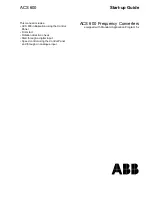
H0 Sound Decoder MX640 Page 29
The
“confirmations jingle”
is played after ending the selection procedure with F3 or F8.
Simplified procedure (without using CV #300) with MX31, SW1.2 or MX31ZL, SW3.06
Allocating sound samples to function keys F1 … F12:
The engines can be
operated normally
during the selection procedure: with speed regulator, direc-
tion key and MAN key (the latter only with ZIMO cabs); functions cannot be actuated until the selec-
tion procedure is terminated with F3, F8 or by other programming steps, see above.
A sound sample can be allocated to each function key F1…F12 from the sound samples stored in
the decoder. It is absolutely permissible to have a function key assigned for a function output (FO1,
FO2 etc.) as well as for a sound function, both of which will be activated when the key is pressed.
Selecting boiling, whistle, blow-off and brake squeal sounds:
The
allocation procedure
for function sounds are initiated with a “Pseudo-Programming” in opera-
tions mode programming:
The selection procedures for these “automated background sounds” are initiated with a “Pseudo-
Programming” in operations mode programming
CV #300 = 1
for function F1
CV #300 = 128
for the boiling sound (STEAM only)
CV #300 = 2
for function F2
CV # 300 = 129
for direction-change sound
CV #300 = 3
for function F3
CV #300 = 130
for the brake squeal
etc.
CV #300 = 131
thyristor-control sound (electric engine)
CV # 300 = 20
for function F0 (!)
CV #300 = 132
for the “start” whistle
Note: Function F4 is by default used for water drainage sound (with CV #312); if F4 is to be used for
something different, CV #312 must be set to zero (CV #312 = 0).
CV #300 = 133
for blow-off sound =cylinder valves (STEAM only)
NOTE: the blow-off sound selected here is also used as the
blow-off sound actuated with a function key (see CV #312).
CV #300 = 134
for the driving sound of an ELECTRIC engine
The allocation procedure is very similar to the selection procedures for driving and background
sounds, with the difference that sound allocation is not limited to sound samples of a certain group
but also allows switching between groups to find the desired sample.
The selection procedure for background sounds is the same as for the selection of chuff sounds ex-
cept the engine should be at a
stand still
because the
speed regulator
is used
for setting the
volume
for the relevant sound file!
.
Sound samples are organized in groups for easier location; i.e. groups like “short whistle” / “long
whistle” / “horn” / “bell” / “shoveling coal / “announcements” and much more.
Note: these sound files can also be used as function sounds allocated to function keys (see next
page); the automated back-ground sounds can then be cancelled with the function keys.
The engine should remain
stationary
though since the
speed regulator
is used
for
volume set-
tings
during the allocation procedure!
The function keys have the following special meaning
Depends on entry: F1 . . . F12
during the selection procedure, speed regulator is
MENÜ SOUND Selection
used for volume setting!
Boiling --- SAMPLE ---
((((( play ((((( prev ((((( next
CLEAR --- GROUP ----
((((( + end ((((( prev ((((( next
STORE
((((( ((((( ((((( + end
MENÜ Functions-SOUND
.
F6 --- SAMPLE ---
((((( play ((((( prev ((((( next
CLEAR --- GROUP ----
((((( + end ((((( prev ((((( next
----- LOOP ----- STORE
((((( loop ((((( short ((((( + end
ZIMO MX31 key arrangement :
(((((
1
F0
(((((
2
F1
(((((
3
F2
(((((
4
F3
(((((
5
F4
(((((
6
F5
(((((
7
F6
(((((
8
F7
(((((
9
F8
Function keys are used as with chuff selections:
F0
=
play: plays back the currently selected sound.
F1, F2
=
prev., next: plays back the previous or next recording.
F4, F5 =
prev, next :
switches between sound groups
The
speed regulator
acts as volume control for the
background sound during selection procedure.
F3
=
CLEAR + end: Selection procedure is stopped
and the current sample removed.
F8
=
STORE + end: Selection procedure is stopped
and new selection activated.
The
selection procedure
can also be
ended
by any
other programming procedure or by removing power.
The function keys have the following
special meaning during
the selection procedure!
Drawing of an MX31 display, not a photo!
F0
=
play: plays back the current chuff sound for evaluation.
F1, F2
=
prev., next: plays back the previous or next recording stored in the decoder.
F4, F5
=
prev., next: switches between sound groups (e.g. whistles, bells etc.); plays back the
first sample of this group.
The
speed regulator
acts as volume control for the selected sound during allocation procedure.
F6
=
loop: If F6 is “on” when exiting the allocation procedures, the sound sample is stored
and played back as long as the relevant function key is pressed by
Playable whistle!
repeating the sound between the loop marks (the loop marks are part of
the sound file).
F7
=
short: If F7 is “on” when exiting the allocation procedures, the sound sample is
shortened and played back for the duration of the function actuation, by
omitting the center portion.
ZIMO MX31 key arrangement :
3
F2
(((((
1
F0
(((((
2
F1
(((((
(((((
4
F3
(((((
5
F4
(((((
6
F5
(((((
7
F6
(((((
8
F7
(((((
9
F8
ZIMO MX31 key arrangement :
(((((
1
F0
(((((
2
F1
(((((
3
F2
(((((
4
F3
(((((
5
F4
(((((
6
F5
(((((
7
F6
(((((
8
F7
(((((
9
F8
MENÜ SOUND Selection
Brake squeal --- SAMPLE ---
((((( play ((((( prev ((((( next
CLEAR --- GROUP ----
((((( + end ((((( prev ((((( next
STORE
((((( ((((( ((((( + end
MENÜ SOUND Selection
Blow off --- SAMPLE ---
((((( play ((((( prev ((((( next
CLEAR --- GROUP ----
((((( + end ((((( prev ((((( next
Normal function outputs cannot be activated as long as
the selection procedure is active!
STORE
((((( ((((( ((((( + end
















































